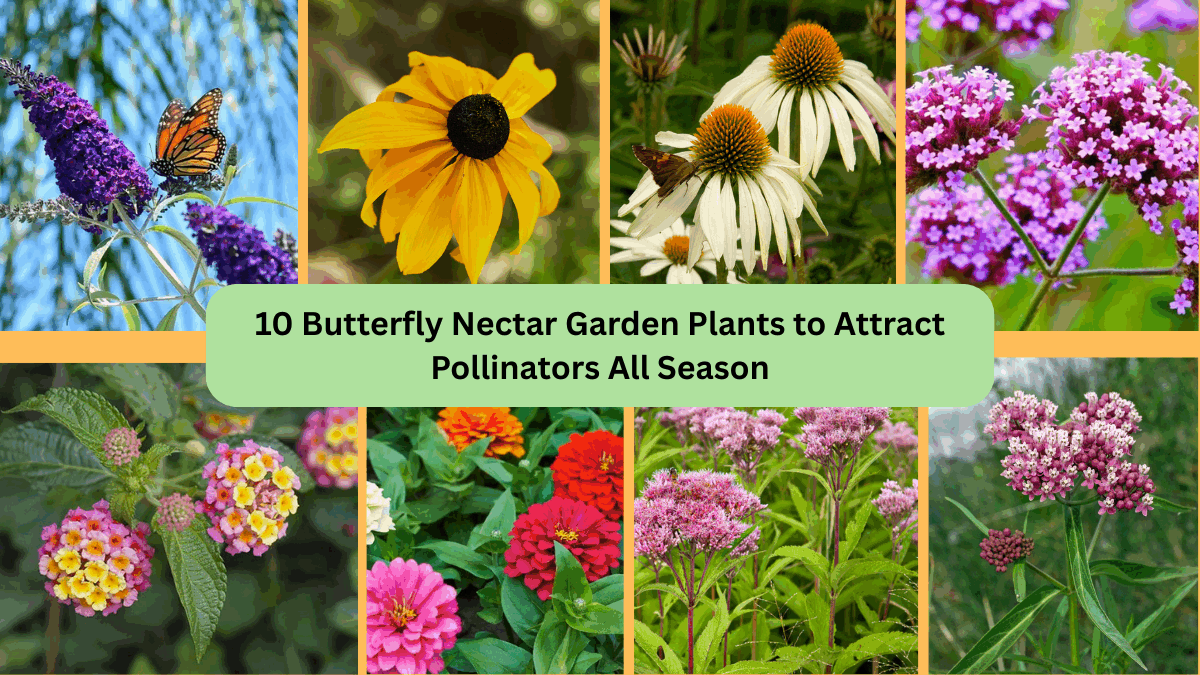10 Best Flowering Plants for Your Pollinator Garden

Best Fruit Plants You Can Grow at Home
August 27, 202510 Best Flowering Plants for Your Pollinator Garden
Creating a pollinator-friendly garden is one of the best ways to support nature while adding vibrant beauty to your outdoor space. Bees, butterflies, hummingbirds, and other pollinators rely on nectar- and pollen-rich plants for survival, and in return, they help your plants thrive. If you want to transform your garden into a buzzing paradise, here are 10 of the best flowering plants you can grow.
1. Lavender
Lavender is loved not only for its calming fragrance but also for its nectar-rich blooms. Bees and butterflies flock to its purple flowers, and it thrives in sunny, well-drained spots.
2. Coneflower (Echinacea)
This hardy perennial adds cheerful color and attracts butterflies, bees, and even birds. Coneflowers are drought-tolerant and bloom from summer to fall, making them a long-lasting choice.
3. Sunflowers
Bright and bold, sunflowers are a magnet for bees and birds. Their large blooms provide both nectar and seeds, making them a dual-purpose plant for pollinators and wildlife.
4. Bee Balm (Monarda)
As its name suggests, bee balm is a pollinator favorite. Its vibrant red, pink, or purple blooms attract bees, hummingbirds, and butterflies while also adding fragrance to your garden.
5. Zinnias
Zinnias are easy to grow from seed and bloom in a variety of colors. These annuals are loved by butterflies and make a bright, cheerful addition to beds and borders.
6. Milkweed
Milkweed is essential for monarch butterflies, serving as both a nectar source and a host plant for caterpillars. It’s a must-have if you want to support butterfly conservation.
7. Black-eyed Susan (Rudbeckia)
With their sunny yellow petals, black-eyed Susans are not only attractive but also hardy and low-maintenance. They provide nectar for bees and butterflies throughout the summer.
8. Salvia
Salvia’s tall spikes of purple, blue, or red flowers are a magnet for hummingbirds and bees. They thrive in warm weather and add a striking vertical element to garden designs.
9. Marigolds
These cheerful flowers do double duty—they attract pollinators while helping to repel certain garden pests. Their bright orange and yellow blooms are easy to care for and bloom all season.
10. Cosmos
Cosmos produce delicate, daisy-like blooms in shades of pink, white, and purple. They’re a favorite of bees and butterflies and are simple to grow from seed, even in poor soil.
🌸 Tips for Creating a Pollinator Garden
-
Plant a variety of flowers that bloom at different times to provide food year-round.
-
Choose native plants whenever possible, as local pollinators recognize and thrive on them.
-
Avoid chemical pesticides and herbicides that can harm pollinators.
-
Add a water source like a shallow dish with pebbles for bees and butterflies to drink safely.
By planting these 10 flowering plants, you’ll create a vibrant pollinator garden that not only looks stunning but also supports the environment. A little effort goes a long way in helping bees, butterflies, and hummingbirds thrive! 🌼🐝🦋

